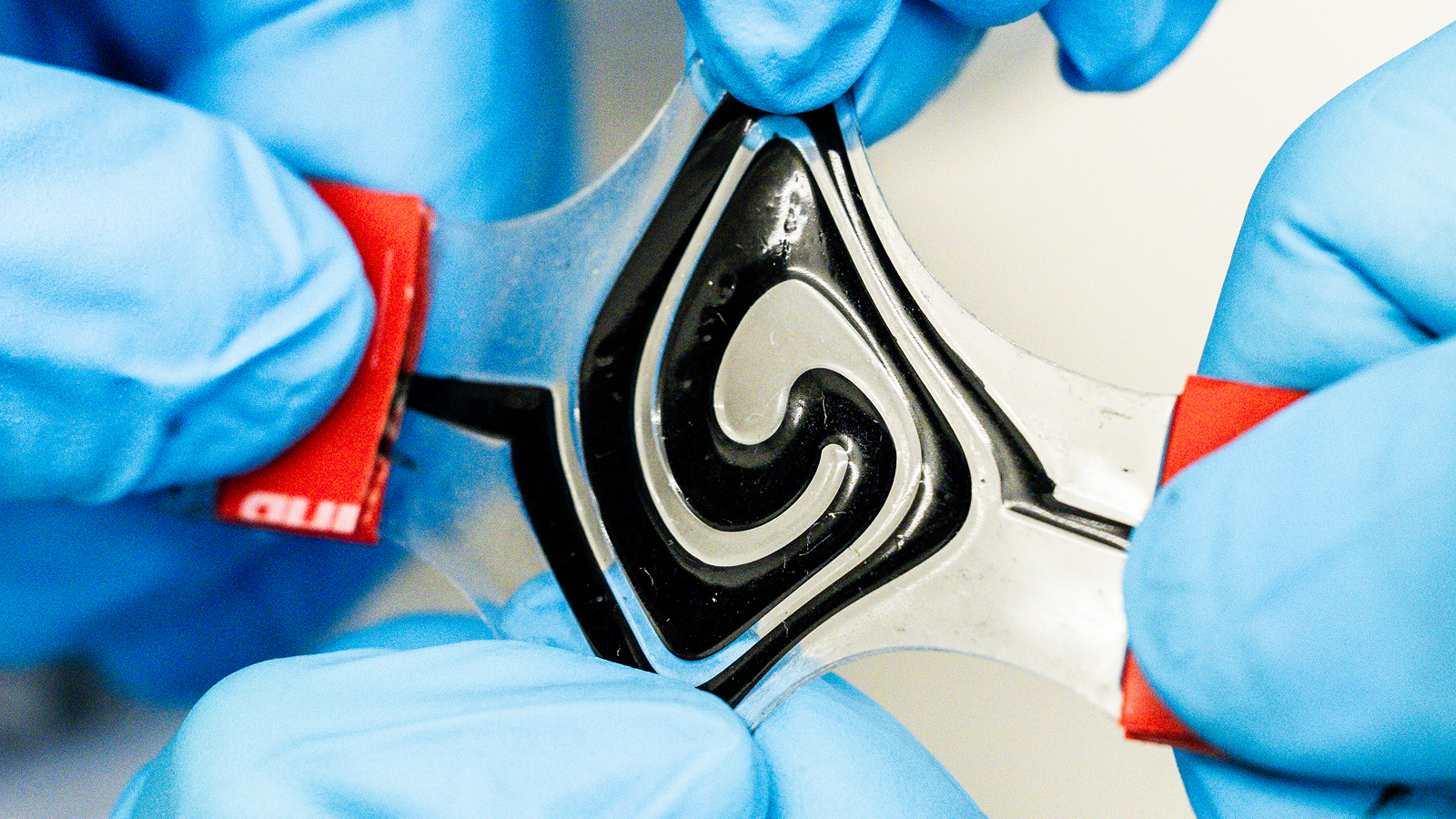Breakthrough stretchy battery moves like toothpaste and could power pacemakers and hearing aids
This breakthrough in battery power could bring wearable tech, implanted medical devices, and humanoid robots to life.

Scientists say they've created a battery that can stretch and bend without losing power. The discovery paves the way for wearable technology, smart medical devices, and robots with human-like movements.
"The texture is a bit like toothpaste," senior author Aiman Rahmanudin, an assistant professor at Linköping University in Sweden, said in a statement. "The material can, for instance, be used in a 3D printer to shape the battery as you please. This opens up for a new type of technology."
Traditional batteries face a tradeoff between size/flexibility and power. The scientists at Linköping University's Laboratory of Organic Electronics solved that problem by using materials that can hold and conduct negative and positive charges to power devices regardless of their energy demands. The findings were published April 11 in the journal Science Advances.
"Batteries are the largest component of all electronics," Rahmanudin said. "Today they are solid and quite bulky. But with a soft and conformable battery, there are no design limitations. It can be integrated into electronics in a completely different way and adapted to the user."
Separating battery capacity from battery size with organic materials
To produce their design, the researchers reimagined the active ingredients, d the connective portions and the terminals that make up a battery. The active ingredients of cathodes (positive charges) and anodes (negative charges) are made of modified lignin, an organic material. The connections or positive and negative terminals of the battery are still metallic but they're made of nanographite and silver nanowires that are small enough to remain flexible with the rest of the battery.
The result is a battery that behaves somewhat like a water balloon — retaining its overall shape and holding a large amount of material while remaining flexible, the scientists said in the study.
Get the world’s most fascinating discoveries delivered straight to your inbox.
"The study from Linköping University demonstrates a groundbreaking approach to battery design," Pragathi Darapaneni, a senior product development engineer at Schaeffler Asia, told Live Science in an email. "By utilizing fluid electrodes, the researchers have created a battery that maintains functionality while being deformable. This could lead to significant advancements in the design of wearable and implantable devices."
Potential applications of this discovery include insulin pumps, pacemakers and hearing aids, along with e-textiles containing electronics in clothing that conform to the user's body, and soft robotics that enable robots to bend and flex smoothly.
The researchers said in the study that they've based their soft battery on conductive plastics (conjugated polymers) and lignin, a byproduct of the paper production. The battery can be recharged and discharged over 500 times and still maintain its performance. It can also be stretched to double the length and still work just as well."
While the researchers state the battery isn't perfect, since the concept is proven at 0.9 volts and most batteries charge at minimum 1.5 volts, they are looking for chemical compounds to expand the voltage capabilities.
"While promising, fluid batteries must be evaluated for potential risks, ensuring that the materials used are non-toxic and safe for prolonged contact with human skin," Darapeni wrote about the study.
Lisa D Sparks is a freelance journalist for Live Science and an experienced editor and marketing professional with a background in journalism, content marketing, strategic development, project management, and process automation. She specializes in artificial intelligence (AI), robotics and electric vehicles (EVs) and battery technology, while she also holds expertise in the trends including semiconductors and data centers.
You must confirm your public display name before commenting
Please logout and then login again, you will then be prompted to enter your display name.

